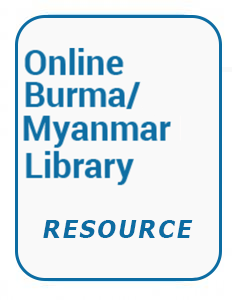Location
The Human Rights Documentation Unit is a division of the National Coalition Government of the Union of Burma that is responsible for producing an annual human rights yearbook.
Members:
Resources
Displaying 16 - 20 of 23Burma Human Rights Yearbook 2001-2002: The Situation of Refugees
...There are currently more than 135,000 refugees living in Thailand. Refugees from Burma are also in refugee camps along the
Bangladeshi and Indian borders, as well as working and living in Bangladesh, India, Pakistan and Malaysia. The line between
refugee and migrant is a thin one and there are also an estimated 1 million migrant workers living in Thailand who have fled from
their homes for many of the same reasons that official refugees have. (The topic of migrant workers from Burma is covered in
Landmine chapter of the Burma Human Rights Yearbook 2001-2002
Landmines are weapons that kill and maim indiscriminately, whether it be civilians, soldiers, elderly people, women, children or
animals. They cause injury and death long after the official end of a war. Contrary to trends in the rest of the world, rather than
reduce or abolish the use of landmines, the SPDC has actually increased production of anti-personnel landmines and at least in
the case of the Burma-Bangladesh border, is actively maintaining minefields. In Asia, Burma is currently second only to
Landmine chapter of the Burma Human Rights Yearbook 2000
Landmines are weapons that kill and maim indiscriminately, whether it be civilians, soldiers, elderly, women, children or animals
and cause injury and death long after the official end of a war. Contrary to trends in the rest of the world, rather than reduce or
abolish the use of landmines, the SPDC has actually increased production of anti-personnel landmines and at least in the case of
the Burma-Bangladesh border, is actively maintaining minefields. In Asia, Burma is currently second only to Afghanistan in the
Burma Human Rights Yearbook 2000: The Situation of Refugees
There are currently more than 120,000 refugees living in Thailand. Refugees from Burma are also in refugee camps along the
Bangladeshi and Indian borders as well as working and living in Bangladesh, India, Pakistan and Malaysia. The line between
refugee and migrant is a thin one and there are also an estimated 1 million migrant workers living in Thailand who have fled from
their homes for many of the same reasons that official refugees have. (The topic of migrant workers from Burma is covered in
Burma Human Rights Yearbook 2000: Internally Displaced People and Forced Relocation
The plight of Internally Displaced People, or IDPs, in Burma was a continuing problem over the year 2000. Burma contributes
over an estimated 1 million IDPs to the estimated world IDP population of 21 million and estimated Asian IDP population of 5
million. (The CIDKP put the IDP number at 2 million in 2000.) Internally displaced persons in Burma live under conditions of
severe deprivation and hardship. All but few of these people are without adequate access to food or basic social, health and


